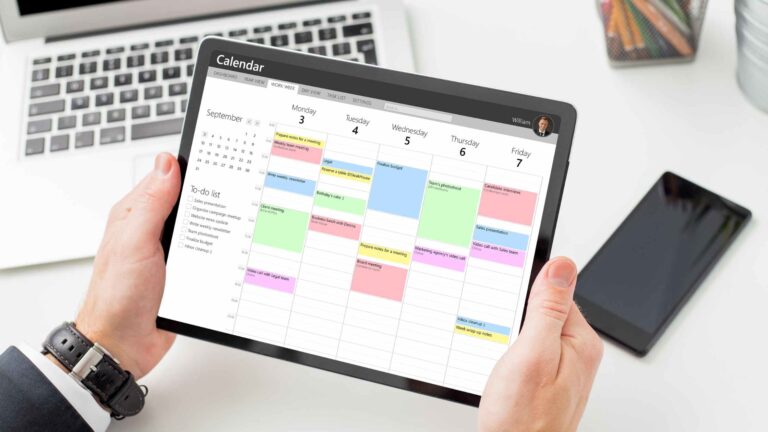
-
Set Clear Goals
First things first, set clear, actionable goals. A goal is a specific, measurable, achievable, relevant, and time-bound (SMART) objective that defines what you want to accomplish. Forget vague goals like “improve sales,” a SMART goal would be “increase monthly sales revenue by 15% within the next six months by implementing a new marketing strategy targeting a specific customer segment. Without a clear destination in mind, it’s easy to get lost or lose motivation along the way. By articulating clear goals, you provide direction and focus for your planning efforts, making it easier to prioritize tasks and allocate resources effectively.
-
Break It Down
Once you’ve established your goals, the next step is to break down large projects into smaller, more manageable tasks and milestones. Ever had big projects looming over you like a dark cloud? This step-by-step approach allows you to create a clear roadmap for achieving your objectives, making it easier to track progress and stay on course. By breaking tasks into smaller, actionable items, you can see steady progress towards your goals and celebrate your wins along the way. Remember to acknowledge and reward yourself for each milestone reached. You deserve it!
-
Effective Prioritization
We all have countless demands vying for attention, effective prioritization is essential for maximizing productivity. Identify the most important and urgent tasks on your to-do list and prioritize them accordingly, focusing your time and energy on top priority activities. Consider utilizing productivity techniques like the Eisenhower Matrix or the ABCDE method to categorize tasks effectively. The Eisenhower Matrix helps prioritize tasks by urgency and importance, dividing them into four quadrants: urgent and important tasks (do first), important but not urgent tasks (schedule), urgent but not important tasks (delegate), and not urgent or important tasks (eliminate). Similarly, the ABCDE method emphasizes prioritizing tasks into categories: A tasks (most important), B tasks (important but not urgent), C tasks (tasks that could be done), D tasks (delegate), and E tasks (eliminate). By utilizing one of these methods, you can streamline your workflow and focus on tasks that align with your goals.
-
Time Blocking
Time blocking is a powerful technique for maximizing productivity and staying focused on your priorities. Allocate dedicated blocks of time in your schedule for specific tasks or projects, minimizing distractions and ensuring focused work periods. For example, you might allocate 9:00 am to 11:00 am for focused work on a project, 11:00 am to 12:00 pm for responding to emails, and 1:00 pm to 3:00 pm for meetings or collaborative work. During each time block, you commit to working solely on the designated task without interruptions.
This approach helps you structure your day effectively, maintain focus on your priorities, and make tangible progress on important tasks. By batching similar tasks together and dedicating uninterrupted time to important activities, you can increase efficiency and productivity, making the most of your available time. Additionally, limiting email and cell phone alerts has been found to greatly improve productivity by reducing interruptions and allowing for deeper focus on tasks at hand.
-
Review and Adjustment
Effective planning is not a one-time event—it’s an ongoing process that requires regular review and adjustment. Take the time to periodically review your progress towards your goals and adjust your plans as needed based on changing circumstances or new information. Stay agile! This is a great way to ensure that your plans remain relevant and effective. Structured evaluation sessions involving stakeholders is a great way to keep the team engaged. By having these sessions periodically, everyone can contribute insights and feedback. This collaborative approach fosters transparency and adaptability, empowering the team to tackle challenges head-on.
-
Maintain Work-Life Balance
Lastly, remember that productivity is not just about getting more done, it’s also about maintaining a healthy balance between work and life. Stop overcommitting yourself and prioritize self-care activities such as exercise, relaxation, and spending time with family and friends. It’s perfectly okay to say no or hit pause on additional commitments. By taking care of your physical and emotional well-being, you can recharge and approach your planning efforts with renewed energy and focus.
Maximizing productivity through better planning is a marathon, not a sprint. By setting clear goals and objectives, breaking down projects into manageable tasks, prioritizing effectively, utilizing time blocking, regularly reviewing and adjusting plans, and maintaining a healthy work-life balance, you can tackle tasks with focus and efficiency, ensuring success. Now that you have these tips, you’re unstoppable. So what are you waiting for? Get out there and make it happen!
P.S. Need a Project Manager? My name is Donna Franklin West and I’ve had over 20 years of project management experience in tech and IT. If you need to inquire about our project management services, please book a free consultation here.



